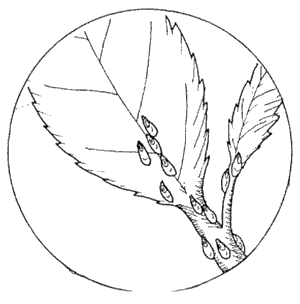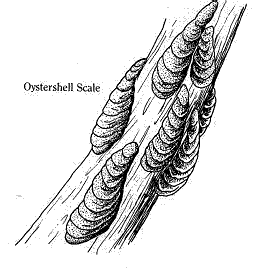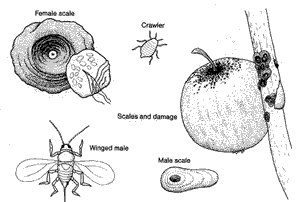Identifying Scale
 |
| Close up of Scale |
Scale insects are related to mealybugs, aphids, and whiteflies, however, they don't resemble any of these relatives. There are two major forms of scale: soft and armored. Soft scale insects may be exposed or covered, but they are typically coated by a soft, cottony or powdery substance. Armored scale insects have a protective covering of wax and cast skins from previous molts. They appear as reddish gray or brown bumps on plant stems, their waxy outer shells protecting them while they suck sap from plant tissues. The size and appearance of the protective shells vary, depending on the type of scale. They range in size from a small letter “o” to the capital letter “O” and may be round, elongated, or oyster-shaped; flattened or almost spherical.
 |
Scale are major pests of woody plants--shrubs, trees, vines--many ornamental plants and houseplants. Their feeding reduces plant vigor, making them more susceptible to injury and attack by other insects (particularly borers) or diseases. Uncontrolled, they can kill an entire plant. Many scale species also excrete honeydew, which attracts ants and encourages the growth of sooty mold on infested foliage.
Scale Growth Stages
 |
As cold weather approaches, scale insects crawl into bark crevices to overwinter. They emerge on warm days in spring and crawl on the bark. Males may be winged and fly feebly about. Under their shells, female scale insects either lay eggs or bear live nymphs. Young scale insects crawl to other parts of the plant and settle down to feed and build their own shells, typically about the time fruit trees bloom. Nymphs are sometimes also carried long distances by birds or wind to other locations. Depending on the species, 1 to 2 generations are completed annually in Northern areas of the country, whereas as many as 7 generations occur annually in the warmer South. They are best controlled when the nymphs are still crawling around before they’ve built their little shells.

